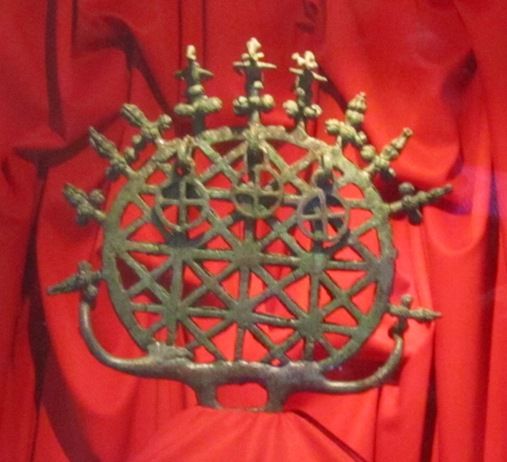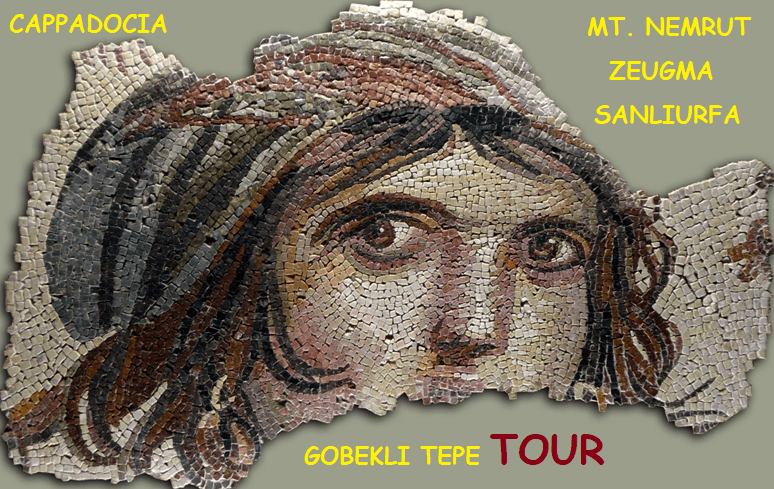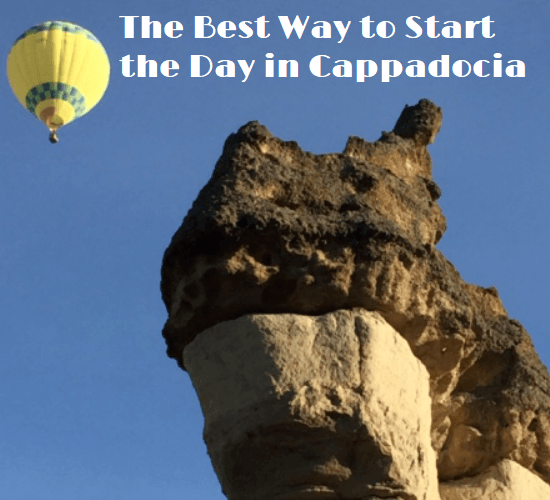HITTITE HERITAGE
One of the most important archaeological discoveries of the 20th century is the revelation of the Hittite findings in Hattusas, located in the 208 km (129 miles) west of Ankara, the capital of the Republic of Turkey. It is indeed weird that such an important civilization is discovered as late as the 20th century while the Hittite Civilization was such a big political and cultural power in the whole Anatolia and Syria with their law and faith. The interest towards the culture had already aroused during the mid 19th century, though.

Charles Felix Marie Texier (1802-1871), French historian, architect and archaeologist came to Anatolia in 1834 in search of a city named Tavium (Büyüknefes Village near Yozgat), which he thought it was located in a fertile region along the Halys (Kızılırmak River and Maraşantiya in Hittite language). When he was riding on his horse around Bogazkoy (Hattusas, in Hittite times) he came across some ruins and various hieroglyphs as well as a big edifice, two majestic gates and the remnants of a 1-km long city wall. He wrote on his notebook that these remnants had nothing to do with the Roman ages, but it was a very big city as in the most prosperous period of Athens.
He also saw Yazılıkaya and its environs. In his book on Asia Minor, “Description de L’Asie Mineure”, which was first published in 1839, he referred to this site asking who lived in there by pointing out that Bogazkoy ruins are the proof of a nation with such a rich culture.
The further discoveries of other cuneiform and hieroglyph inscriptions in Hama (Syria), Kargamış (Gaziantep) and Ivriz (Konya Ereğli) by archaeologists were the reminiscent of those found in Yazılıkaya by Texier and this proved that there was a nation lived in both Anatolia and Syria with a common language and culture; but there was not any clue as to who were they?
Then the Old Testament gave some idea, as there was mention of Hittites (2 Kings, 7:6) as follows:
For the Lord had caused the Arameans to hear the sound of chariots and horses and a great army, so that they said to one another, "Look, the king of Israel has hired the Hittite and Egyptian kings to attack us!"
The Rev. Archibald Henry Sayce, a British Assyriologist and linguist came to Anatolia in 1870s and, thereafter, delivered a speech at a conference in London. By referring to the Old Testament he claimed that all these remnants pertained to Hittites and then printing his book named “The monuments of the Hittites. And The bilingual Hittite and cuneiform inscription of Tarkondêmos” in 1881.
Another proof was found on one of walls of an Egyptian temple depicting the victories (!) of Pharaoh Ramses II against the Hittites. The full text of the peace treaty that put end to the wars between Egyptians and Hittites had also been inscribed on to the walls.
Hatti land was also often mentioned on the Assyrian sources.
In 1887, a woman in Tell el-Amarma (300 km/286 miles south of Cairo in Egypt) threw mud over a few men who disturbed her. Then it was understood that this mud was part of the richest cuneiform archive pertaining to the period of Pharaoh Amenophis IV, which would be later called as Amarna Letters and, further to the excavations, to be removed to London and Berlin. These letters in Akkadian, the language that was used on international relations during the old ages, were in cuneiform form that had already been deciphered previously. Amongst them, there was a letter sent by Suppiluliuma, the Hittite King, to Paharaoh Ehnaton to congratulate his ascension to the throne. Thus, it was proved that both figures lived during the same period (B.C. 14) also proving the presence of the Hatti Kingdom.
Geman engineer Carl Human and archaeologist Hugo Winckler made the first plans of Boğazköy and copied the reliefs. Winckler obtained permission for the excavations in 1906-1908 and found thousands of tablets amongst which the Kadesh Treaty was present, a copy of the one that had previously been discovered on the walls of Karnak Temple in Egypt. He also cleaned the Pottern (Ground Gate).
Now it was the time to work on deciphering the language…
The Period of Hattian Culture (2500-2000 B.C.)
During the middle of the third millennium that early bronze age also started, a race of people, the Hatti, lived in Central Anatolia, which we learnt through the Hittite tablets. The Hittites even called their kingdom as the Land of the Hatti through their language, called as Nesian. The Hatti language (Hattic) is recognizable by its extensive use of prefixes and is different from all other Asian and Near Eastern languages. The influence of Hattic civilzation is also seen in Hittite religous rites, state and court ceremonies as well as in mythology. Hattusa, the Hittite capital, was originally a Hattic settlement.
The pronounced Hattic elements in Hittite culture prove that Hattis had reached an advanced intellectual level. In fact the finest works of art of that period originated from the very heart of the old Hittite civilization. During the excavations carried out by Turkish archaelogists, Remzi Oguz Arık and Hamit Kosay, bronze, gold and silver objects of extaordinary beauty and value were unearthed.
The Early Hittite Period (2000-1750 B.C.)
The influx of the Indo-European tribes into Asia Minor towards the end of the 3rd millenium ceased the impressive growth of the Hattic civilization. During the first quarter of the 2nd millenium there are a few Central Anatolian city-states that are ruled by minor potentates like Kanesh (Nesa), Kussara, Hattusa, Zalpa and Puruskhanda. These fell gradually into the hands of the Hittite rulers.
Writing was brought to Anatolia in the days of the city-states through the Assyrian trade colonies. Early Hittite rulers like Anitta, king of Kussara, used the Mesopotamian cuneiform in the 18th century B.C.
The Old Hittite Kingdom (1750-1450 B.C.)
A few generations after Mursili I (1620-1590 BC) Hittites conquered first Aleppo and then Babylon, causing the downfall of Hammurabi dynasty state in the Near East.
The Hittite Empire (1450-1200 B.C.)
In the 15th and 14th centuries, the Hittites established a very important state while sharing the hegemony of the eastern world with the Egyptians, but creating a civilization of great originality and distinction.
During this period Hurrian civilization exercised a strong influence on the Hittites. They adopted the Hurrian conception of the deities.
The Late Hittite Period (1200-700 B.C.)
Around 1180 B.C. Hattusa fell victim to the attacks by Thracians and late Hittite principalities became relatively active after the fall of the Empire.
The locations that Hittite works of art can be observed:
Istanbul
Archaelogical Museum & Old Eastern Works Museum
Ankara
Anatolian Civilizations Museum
Sıhhiye Hittite Monument
Çankırı
İnandıktepe
Çorum
Alacahöyük
Alacahöyük Museum
Alacahöyük Gölpınar Dam
Hattusas
Boğazköy Museum
Yazılıkaya
Çorum Museum
Şapinuva (Ortaköy/Yerköy)
Hüseyindede
Yeniköy
Eskiyapar
Amasya
Amasya Museum
Tokat
Tapigga (Maşat Höyük-Zile)
Sivas
Sarissa (Kuşaklı Höyük)
Dövlek
Yozgat
Alişarhöyük
Kayseri
Kültepe
Pınarbaşı Karakuyu Dam
Erciyes Fıraktın
Kayseri Museum
Aksaray
Acemhöyük
Konya
Ereğli İvriz
Türkmen-Karahöyük
Beyşehir
Eflatunpınar
Fasıllar
Bodrum
Museum of Underwater Archaeology-Uluburun Ship Wreck Hall
İçel
Tarsus
Adana
Azativataya (Karatepe-Arslantaş)
Seyhan River Sirkeli
Adana Archaeology Museum
Hatay
Alalah
Gaziantep
Cerablus (Kargamış)
(Sam’al) Zincirlihöyük
Gaziantep Museum
Yesemek Open Air Museum
Sakçegözü
Kahramanmaraş
Malatya
Arslantepe
Berlin
The Pergamon Museum
USA
New York United Nations Headquarters
New York Metropolitan Museum
Syria
Halab (Aleppo)
Ugarit (Ras Şamra)
Haleb Archaeology Museum
Tell Halaf
Ain Dara
Egypt
Karnak Ramses II Temple
Bibliography:
Akurgal, Ekrem (1985), Ancient Civilizations and Ruins of Turkey, İstanbul, Haşet Kitabevi
Ceram, C. W. (2011), Tanrıların Vatanı Anadolu (Enge Schlucht Und Schwarzer Berg – Die Entdeckung Des Hethiterreiches-1955), İstanbul, Remzi Kitabevi
Çığ, Muazzez İlmiye (2000), Hititler ve Hattuşa: İştar’ın Kaleminden, İstanbul, Kaynak Yayınları






